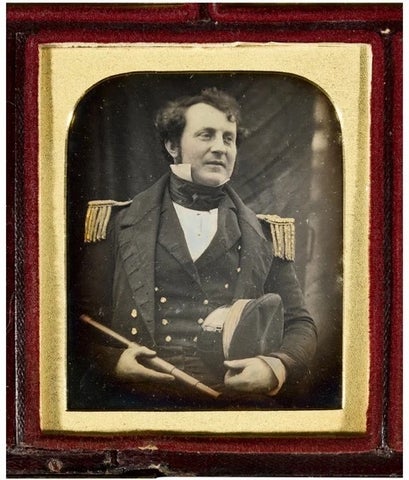Chances are the Franklin Expedition has crossed your news or social media feed this week. New research led by Anthropology's Dr. Douglas Stenton and Dr. Robert Park about the fate of one of its crew quickly gained international attention, thanks to an ongoing fascination with the tragic expedition's history and lore.
This time, it's all about James Fitzjames, a sailor and later captain of the HMS Erebus and one of 129 crew who perished. Working with the Paleo-DNA lab at Lakehead University, the team was able to identify Fitzjames by matching a DNA sample from a tooth to a DNA sample from a living descendant. Fitzjames is only the second member of the expedition to be identified. (The team identified John Gregory, an engineer aboard the Erebus, in 2021.)
If that wasn't newsworthy by itself, the paper also offered further evidence regarding the lengths the crew went to survive. In 1997 Stenton and Park's colleague Dr. Anne Keenleyside found cut marks on nearly one-quarter of the human bones at the site on King William Island in Nunavut - corroborating accounts from Inuit people in the 1850s that they had seen evidence of cannibalism. Metal cut marks on Fitzjames’ mandible not only show that his remains were subject to cannibalism, but are proof that he died before other crew members and that rank or status ultimately wasn't as important as survival.
“The identification of Fitzjames’ remains provides new insights about the expedition's sad ending,” said Stenton, in the media release.
While a few publications tried to sensationalize the story, Park and Stenton call for empathy and a better understanding of survival (or starvation) cannibalism. “It demonstrates the level of desperation that the Franklin sailors must have felt to do something they would have considered abhorrent,” said Park.
As for Fitzjames, his remains rest in a cairn on King William Island where he died. One of the most poignant news articles features his descendant, Nigel Gambier, reminding us of the families and legacies left behind.
Read the Waterloo media release.
Read some of the media coverage: CBC, BBC, the Guardian, Smithsonian Magazine, the Record and Canadian Geographic. Even pop culture outlets such as the Verge and Popular Science picked up the story. Stenton continues to field media requests.
Hear from Nigel Gambier, descendant of Fitzjames.
Update: even more media outlets have picked up the story, including CNN, History.com, and the New York Times. (We can't list all of the coverage here - try a Google News search and you'll see why!) It's been widely discussed by fans of the Terror TV series too.
As of Friday, September 18 the research paper that started it all had an Altmetic score of 1007!

Daguerreotype of James Fitzjames, taken by Richard Beard in May 1845. Photo courtesy of Sotheby’s.